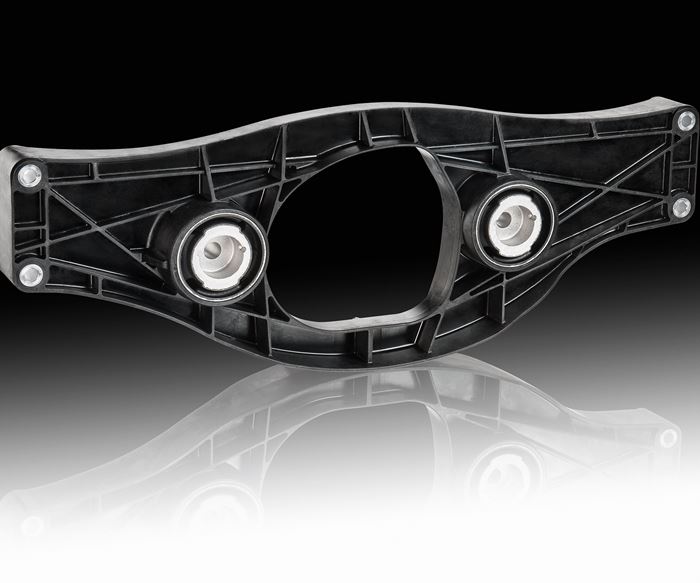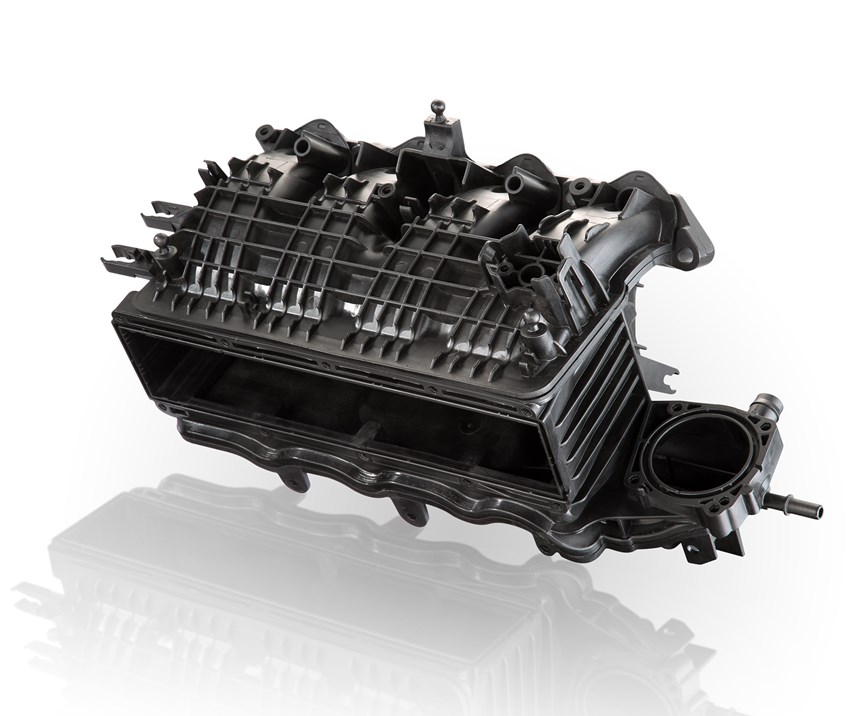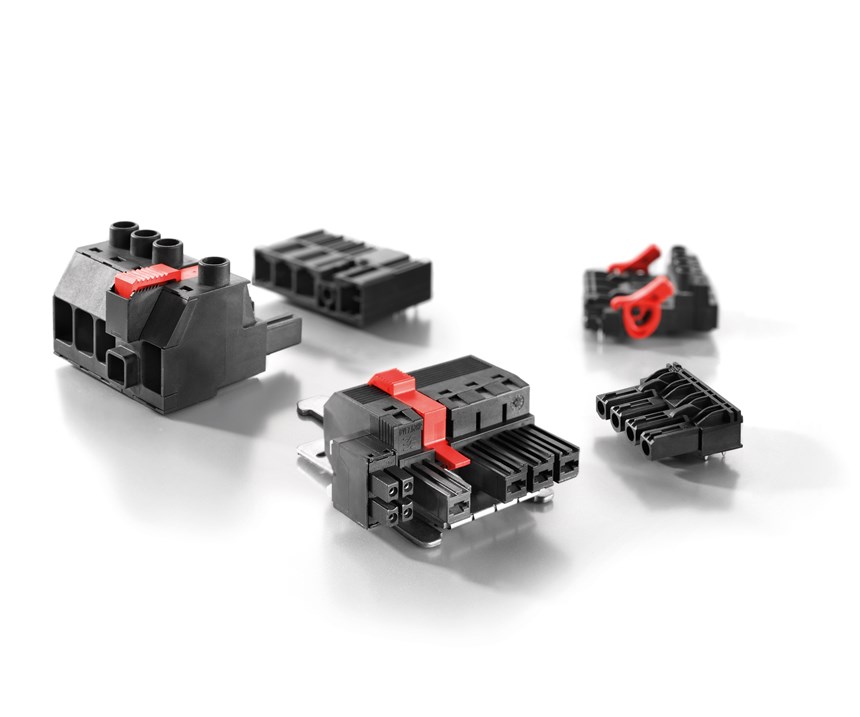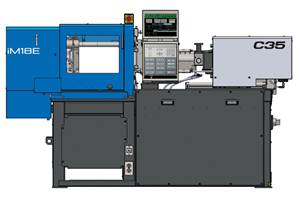In the last couple of years, a developing global supply/demand squeeze in nylon 66 has led some engineering thermoplastic suppliers, compounders and distributors to be on the ready to address continued capacity constraints and higher prices with alternative engineering resins. Chief among these options are nylon 6, PBT, and high-performance nylons like PPAs, as well blends containing increased recycle content. While there are varying projections, most sources anticipate the nylon 66 tightness to continue through to at least part of 2020.
The resin constraints are primarily related to tight supplies of key precursor adiponitrile (ADN), for which current global capacity, estimated at about 3.8 billion lb, is produced by four major players: Ascend Performance Materials and Invista in the U.S.; Butachemie, a joint venture of Invista and Solvay in Germany; and Japan’s Asahi Kasei. An explosion in 2015 at a Chinese ADN plant took out 18% of global capacity. The ADN issue appeared to have landed prominently on nearly everyone’s radar from hurricane season 2017 through 2018, starting with unplanned disruptions in production of ADN and nylon 66, all of which have been largely resolved by now, according to Houston-based IHSMarkit’s Brendan Dooley, global director for engineering resins.
By midyear 2018, nylon 66 prices were up more than 50% from 18 months before. In 2018 alone, there were first-quarter and third-quarter price hikes of 15-20¢/lb. Fourth-quarter price hikes were underway at press time in some parts of the world, and first-quarter 2019 increases would not be surprising. Planned 2019 outages, according to Dooley, include six-week shutdowns in the first and third quarters at Invista’s Victoria, Texas, plant and Butachemie’s German plant, each for the retrofit of new ADN technology.
The good news, according to Dooley, include the some key ADN capacity additions. At Pensacola, Fla., Ascend, the world’s largest fully-integrated nylon 66 player, brought on 110 million lb of ADN in 2017; is soon slated to bring on another 80 million lb; and plans a 360-million-lb expansion by 2022. The 2019 ADN plant retrofits by Invista and Butachemie will each result in a 10% output increase. And Invista Shanghai is scheduled to bring on stream a new 661-million/lb ADN unit in 2023. Dooley ventures that these actions will translate into some nylon 66 supply improvement by mid-2020. For next year, he projects a continued tight supply/demand balance and potential price relief based on either more supply or less demand.
In October, Ascend released a statement that it says was spurred by “conflicting reports on long-term PA 66 availability” in order to restate its commitment to meeting increased market demand for nylon 66 for the automotive, E/E, cable-tie, consumer and industrial markets. The statement also noted, “The fact remains that PA 66 provides the best mix of value, performance and processability among the various thermoplastics available today. Replacing PA 66 with another material has costs beyond availability and price.” Conceding that nylon 66 availability is “constrained for the short term,” the company said it’s working with customers to help relieve that constraint where possible. It added that its acquisition of Dutch plastics compounder Britannia Techno Polymers, which specializes in proprietary nylon compounds, is running at full capacity to serve its European customers. Similarly, its Foley, Ala., and Greenwood, S.C., plants are producing at optimal levels to support customers with compounds and fiber; and production at Pensacola, Fla., following the mid-July force majeure action, was at around 90% of capacity.
BASF, meanwhile, is committed to the nylon 66 market, as it continues to see significant global growth potential, according to Mark Szendro, marketing director for performance materials transportation in North America. “We are continuously pursuing all options to source products along the nylon 66 value chain. However, the reality is that demand is outstripping supply and this will continue for the next several years. This is why BASF is investing in the future with our planned acquisition of Solvay’s polyamide business. The purchase would strengthen BASF’s polyamide 66 value chain through increased polymerization capacities and backward integration into the key raw material ADN.” He added that BASF recognizes the need to pursue alternative materials in the interim and is working closely with customers to identify specific applications that could use alternative materials such as nylon 6, PBT or PPA.
Sources at DowDupont, while acknowledging a temporary tightness in the nylon 66 supply chain, report that they have maintained an uninterrupted supply of nylon products and remain confident in their ability to continue supplying long-term customers with Zytel nylon 66 resins. They noted that the company is the only major nylon 66 supplier with world-scale polymerization and compounding in North America, Europe and Asia.
They also touted their long-established strategy of Zytel “Global Grades”—products made to uniform recipes and specifications at the company’s global locations, which allows for backup from alternate sources. They noted that they have developed a flexible network of suppliers for the key raw materials to ensure they are not dependent on a single upstream asset in any of their product lines. Still, added one company source, “It’s possible that supply will be tight for the next year or two. We have not seen a situation as acute and long-lasting as this has been.”
A sampling of these and other engineering thermoplastics suppliers, compounders and distributors were asked to weigh in, both on their view of the constrained resin situation and their readiness to assist customers with alternative materials where feasible. Nearly all concede that the automotive sector posed the most concern due to the many applications for which nylon 66 is specified and because specification of any replacement cannot occur overnight.
REPLACEMENT ISSUES
Although industry sources concede that several nylon 66 component manufacturers and end-use OEMs are evaluating alternative materials, actual replacement to date appears to have been quite limited. One reason, according to Chris Wilson, v.p. and head of crystalline business for Solvay Specialty Polymers, is that making a switch is no small feat. “Switching from nylon 66 to an alternative material is generally not as easy as just dropping a new resin into the machine. Oftentimes, potential impacts on dimensions, part features or the performance of the part need to be considered. Choosing a supplier that can provide technical and application development support should be part of the decision as well.”
Still, nearly all industry sources contacted concede that they have customers expressing concern about the higher prices and the resin tightness. Sources at PolyOne Corp., Avon Lake, Ohio, reported that they saw this concern in early 2017, when nylon started getting tight, with customers asking for market data, price forecasts, and details on supply constraints. By the same token, PolyOne sources maintain that very few customers have switched to other resins. Said one, “We have some customers who are trying nylon 6, but the more dominant switch is from prime to recycled or wide-spec nylon 66.”
Added Steve Bowen, president of PolyOne’s PlastiComp business: “The supply of nylon 66 has been tightening for over a year, which has required close management to ensure there are no supply disruptions for us. Our long-term partnerships with key suppliers are helping us navigate during this critical period. We have been able secure sufficient nylon 66 material necessary to maintain our core business while also growing some additional segments.”
Solvay’s Wilson said the nylon 66 supply tightness has opened their eyes to a risk they previously had not seen. “I think the industry had taken it for granted that there would be an unlimited supply of nylon 66, and this thinking has now clearly shifted. An automotive customer commented to me that until the situation is resolved they are actively steering development projects away from nylon 66 and into other resins, even if it requires some part redesign.”
According to Wilson, Solvay already has several active developments underway to help customers convert to other resins in the company’s portfolio. “Typically, nylon 66 users try to substitute with products based on PP, nylon 6, or PBT. If these polymers cannot meet the technical requirements, or if costly retooling is required, they then turn to high-performance nylons such as our Omnix HPPA, Ixef PARA, or Amodel PPA.” He added that there are several advantages to moving up the performance pyramid from nylon 66 with such materials. Parts can often be made with thinner walls and therefore use less resin making parts lighter with an overall lower cost and without the need for new or modified tooling. Wilson noted that the surge in nylon 66 pricing has significantly narrowed the price gap versus high-performance engineering resins.
Jose Chirino, technical director of the Americas region for the high-performance materials business unit of Lanxess, reported that for several months, the company’s sales and technical teams have been engaging in frank discussions with customers about the material selection process. “We’ve found that many times the chosen material is more historical than truly engineered into the application. We have questioned this approach and had success in switching customers who are seeing a surge in their part cost due to raw-material increases and are concerned as well about short and mid-term material availability. But apart from cost and availability issues, many nylon 6 and PBT grades can nowadays meet crucial requirements with regards to properties, such as mechanical or thermal performance, surface quality and flame retardancy.”
As reported in a PT blog in July, director of applications development Cliff Watkins of resin distributor PolySource, offered key talking points on this issue to inform customers and to discuss its nylon 66 replacement offerings, which include, nylon 6, PBT, PPA, and aliphatic polyketone.
A different take comes from Alex Fung, president of resin distributor Conventus Polymers: “Customers are concerned that this could continue into 2020. Customers continue to see repeated price increases on nylon 66 and even nylon 6. Sure, there are alternative resins to use such as PBT or nylon 6, but nylon 66 offers a unique combination of properties and value that may make it difficult to replace, so you’ll want make sure you account for these differences. There is no free lunch in plastics.” Fung maintained that the company’s extensive experience in dealing with these kind of supply issues, led it to buy ahead. “We have ample inventory of nylon 6 and nylon 66 grades, so we are welcoming prospective customers.”
ALTERNATIVES AND TARGET APPLICATIONS
Some sources contacted opted to give a brief summary of materials they are offering as nylon 66 replacements when warranted. Others provided a more comprehensive description of their alternative materials for specific applications:
● Celanese Engineered Polymers: Last year, the company acquired Italy’s Nylit Plastics, a producer of high-performance nylon resins and compounds, with a specialty in nylon 66. Jeff Helms, global automotive sales director for engineered materials at Celanese, says the firm has customers strongly considering switching to nylon 6 when the parts can function properly at slightly lower temperature limits and with slightly higher moisture uptake. Celanese is also positioning recycled nylon 66, nylon 6 and post-industrial resin (PIR) offerings.
● DowDuPont: While company sources are not aware of any customers who have switched to alternatives, for those that do want to qualify alternative solutions for existing commercial applications in automotive, E/E, industrial or consumer markets, DuPont offers Zytel nylon 6, Zytel HTN PPA, Crastin PBT, Rynite PET, and Delrin POM acetal.
● PolyOne: Company sources say they are offering nylon 6 for industrial and automotive applications, including underhood components, gears, and housings; adding that these two industries are the most open to trying alternatives. The company’s PlastiComp business is also offering blends of nylon 6 and nylon 66 in long-fiber formulations.
● BASF: Szendro discussed three alternatives. For applications that require good electrical properties, good heat aging, weldability, impact performance and damping, he said Ultramid nylon 6 might be a solution. Possible uses include structural components, powertrain applications, and exterior appearance parts such as door handles and pedals.
For electrical and lighting applications such as connectors, housings for electrical control units, and sensors, where better dimensional stability is a requirement, Szendro cited Ultradur PBT grades.
For cases where parts are exposed to demanding loads in hot air, such as charge-air ducts or parts where there is a lot of wear and friction, Szendro noted Ultramid Advance PPA grades, which boast both hydrolysis and chemical resistance plus excellent dimensional stability. Additional opportunities are in demanding engine-cooling applications and thermostat housings
● Lanxess: Chirino gave some examples of specific replacement applications and newly developed materials to compete with nylon 66. The company supported a customer producing a shifter box in 30% glass-filled nylon 66 by showing that the mechanical properties of the component and the dimensions of the part would be the same if a 35% glass-filled nylon 6 was used. In this case, a 5% increase in glass content overcame the concerns of dimensional and mechanical performance—all while using the existing tooling.
Material availability and cost concerns in the household-appliances market led Lanxess to evaluate alternative materials with a customer producing oven handles in a 30% glass-filled nylon 66. In this case, after understanding the part load and impact requirements, Lanxess suggested a nylon 6 with 30% fiberglass and glass beads. The part passed all dimensional, load and impact requirements, and also had the advantage of improved appearance.
Feedback from nylon 66 customers concerned about long-term fatigue if they switch to an alternative, encouraged Lanxess to develop the new Durethan-Performance “P” nylon 6 compounds. They boast improved fatigue properties and perform considerably better than standard nylon 66 grades. For example, in a fatigue screening test at 248 F, new 30% glass-filled Durethan BKV30PH2.0 reportedly withstood almost 10 times more test cycles than standard 30%-glass nylon 66.
A key criterion for selecting a material in the E/E market, particularly for small parts such as connectors, is cycle time. Chirino said Lanxess has seen increased interest in its Pocan XF (eXtreme Flow) PBT and PBT blends. These reportedly have shrinkage and mechanical properties very similar to nylon 66; but because of the low viscosity, these PBTs can be molded at lower temperatures, reducing cooling time in injection molding, which has led to 15% shorter cycles in some cases.
For flame-retardant applications, Lanxess has positioned its new Pocan BFN2502 unfilled, halogen-free PBT, which achieves a UL 94V-0 rating at an impressive 0.4 mm, to replace halogen-free unfilled nylon 66. According to Chirino, the material meets all flammability requirements, laser-printing evaluations, and joint snap connections, along with excellent mechanical and processing properties, making it very attractive for molders, particularly when no change in tools is needed.
● Solvay: Wilson cited Omnix HPPA, a high-performance PPA, as a clear choice to replace glass-filled nylon 66, as it provides equivalent properties under dry conditions and superior performance after moisture absorption is considered. It can easily be used in hot-water tooling and has similar shrinkage values as nylon 66. It is targeted to structural applications in automotive and food-contact and drinking-water applications in consumer markets.
For higher-temperature applications and/or ones in contact with water/glycol, Wilson suggested Amodel PPA as a good alternative that will outperform nylon 66. For applications requiring high-surface quality and extraordinary mechanical strength, he cited Ixef PARA polyarylamide (also known as MXD6 nylon) as a good alternative to nylon 66.
For applications requiring additional flexibility or better impact resistance, there are toughened and elastomer-reinforced grades in the Amodel PPA and Ryton PPS portfolios that offer potential alternatives to unfilled nylon 66 grades.
● DSM Engineering Plastics: Earlier this year, Rob Crowell, chief commercial officer, discussed the merits of four polymers in the company’s portfolio that could relatively easily replace nylon 66. Starting with Akulon nylon 6, he noted that its near-equivalent performance in stiffness and strength to nylon 66, and superior performance in toughness, processability, and heat-aging up to 392 F, suits it to applications where parts are exposed to hot air such as intake manifolds and air ducts; exposed to oil such as oil pans and filters; and parts with high requirements for surface appearance, such as pedals, door handles and power-tool housings.
EcoPaXX nylon 410, a high-performance biobased nylon, was cited for applications where parts are exposed to water or glycol such as in automotivethermal management. It demonstrates low moisture absorption and excellent chemical resistance, a high crystallization rate for fast and easy processing, and the highest melting point of all biobased nylons at up to 482 F.
Another alternative is DSM’s Stanyl nylon 46 with high stiffness retention up to 554 F and excellent wear and abrasion resistance in combination with low friction at elevated temperatures. It is recommended for parts are exposed to wear and friction (such as gears and chain tensioners), or exposed to demanding loads in hot air (such as charge-air ducts) or oil (such as some engine and transmission components).
Arnite PBT was cited as suitable for electrical and lighting applications such as connectors, lighting frame bezels and LED components, as it demonstrates excellent electrical properties, good dimensional stability, and high specific stiffness. Some grades are optimized to meet the toughest outgassing requirements at up to 392 F.
Related Content
High-Productivity PBT and Nylon Compounds Launched
BASF’s new HPP portfolio is the result of cost-optimized and energy-efficient production.
Read MoreCompact Hybrid Injection Molding Machine Launched
Sumitomo Heavy Industries Ltd. (SHI) has introduced the iM18E, promising the smallest footprint in 20-ton machines.
Read MoreHigh-Performance Nylons that Bridge Gap Between Nylons 6/66 and PPA
BASF’s new Ultramid T6000 and T7000 offer several performance and processing advantages.
Read More"Sustainable" Halogen-Free Flame-Retardant TPEs for Consumer Electronics
Avient expands its reSound Bio and Resound Rec content TPE portfolios.
Read MoreRead Next
Beyond Prototypes: 8 Ways the Plastics Industry Is Using 3D Printing
Plastics processors are finding applications for 3D printing around the plant and across the supply chain. Here are 8 examples to look for at NPE2024.
Read MoreLead the Conversation, Change the Conversation
Coverage of single-use plastics can be both misleading and demoralizing. Here are 10 tips for changing the perception of the plastics industry at your company and in your community.
Read MoreMaking the Circular Economy a Reality
Driven by brand owner demands and new worldwide legislation, the entire supply chain is working toward the shift to circularity, with some evidence the circular economy has already begun.
Read More




























